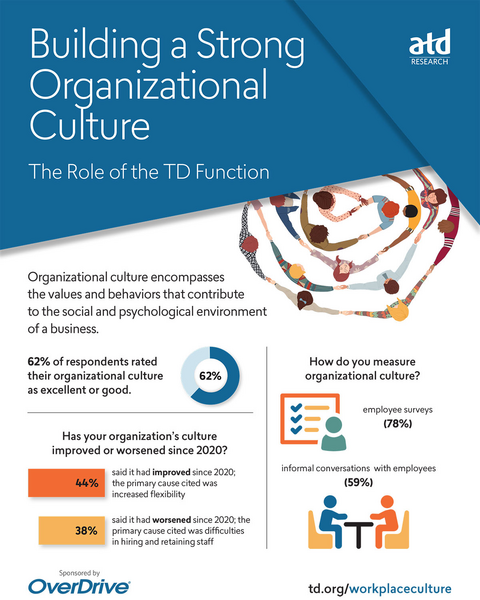ATD Blog
The TD Function and Organizational Culture
Thu Nov 16 2023

ATD defines organizational culture as the values and behaviors that contribute to the social and psychological environment of a business. This is reflected in employee benefits, turnover, hiring decisions, treatment of employees and clients, client satisfaction, and every other aspect of operations.
Building a Strong Organizational Culture: The Role of the TD Function investigates key questions around organizational culture to provide benchmarking data and highlight best practices. The report, which draws upon a sample of talent development professionals from 439 organizations, found that training and facilitation efforts (83 percent) and onboarding programs (70 percent) had the most positive impact on organizational culture.
However, only about one in three respondents said their talent development function was highly involved in defining organizational culture, and an additional third were involved in defining culture only to a low extent or not at all.
So, what’s the best way for talent development to become a full partner in the process of defining and modifying culture? The report recommends that talent development leaders can show that they play an essential role by proving the return on investment of TD initiatives, developing initiatives that directly support organizational objectives, and serving as a nexus between functional areas of the organization.
For more insights from the report, check out the infographic below.

